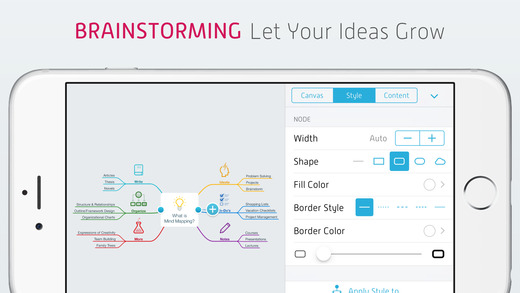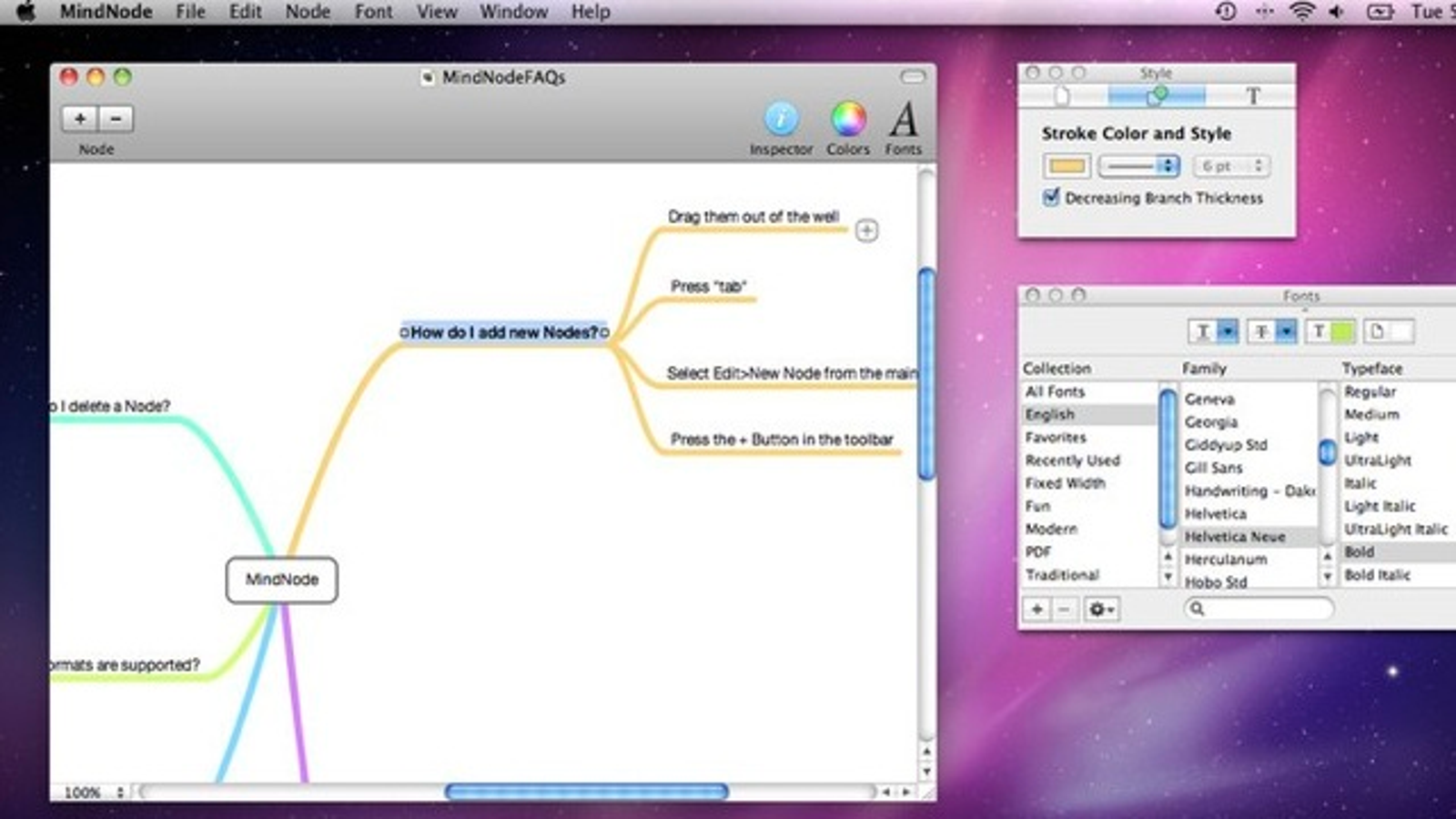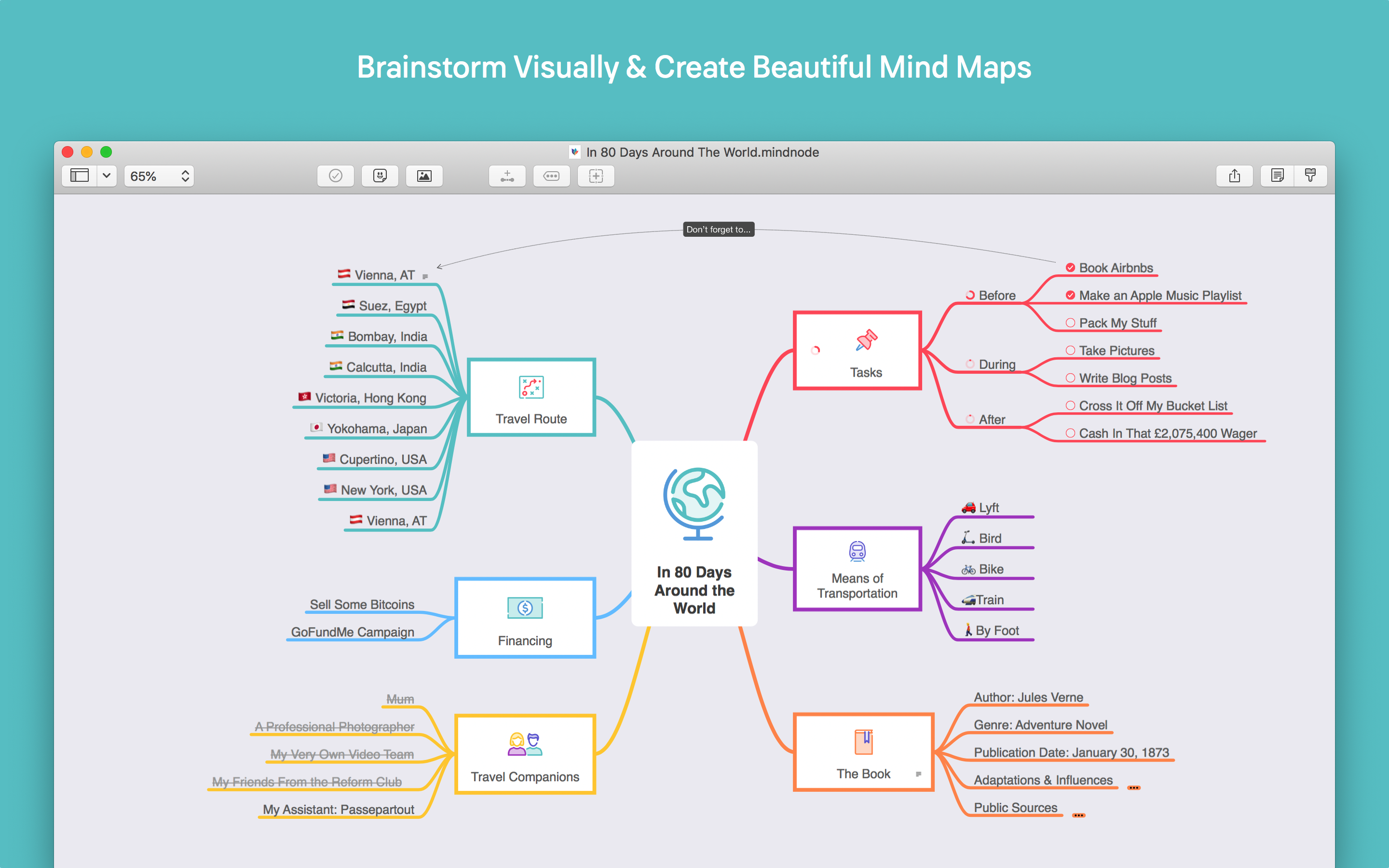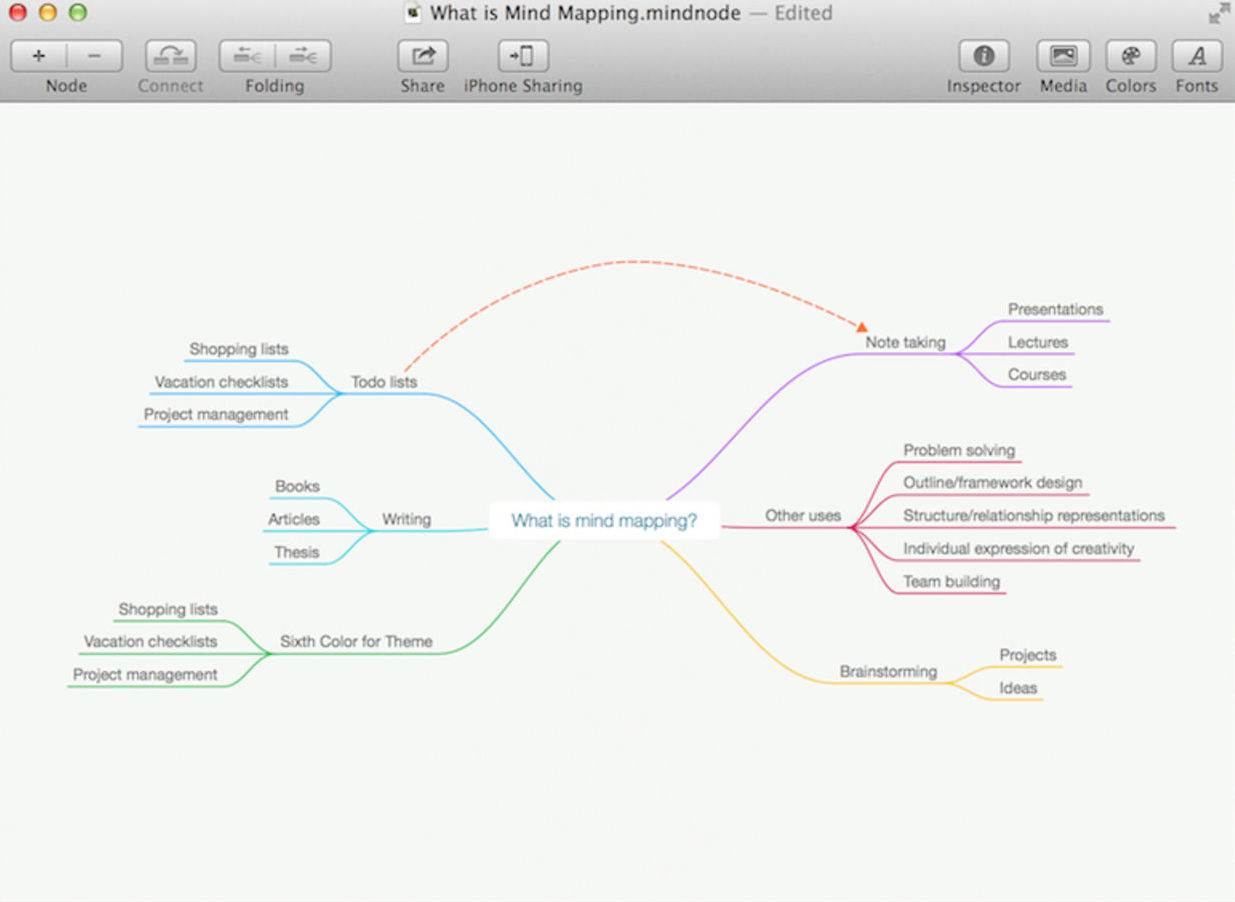
#Mind node pro free
There is no free version for the iPad to try out, but if you have a Mac you can check out the free MindNode (free) version (not MindNode Pro) for the Mac that is also available on the App Store. It is also a great thing to show to colleagues and spouses who are either on the fence of whether or not getting an iPad or who think that you are wasting too much money on gadgets. MindNode is a really useful app for structuring information and getting organized. I will cover the Mac version of MindNode some time later, after iCloud support has been added. Also, I hear (and am very excited about) that iCloud support is coming to the Mac version in the near future.

You can share your mind maps via Dropbox and through wifi sync, and since it is a universal app, you can also access your mind maps from your iPhone. Yes, there is a Mac version, too, and this is one of the best features of MindNode.
#Mind node pro pro
For this, you would have to fire up your Mac and use the desktop version of MindNode Pro ($20, App Store).

What is missing in MindNode for iPad is the ability to add pictures, links, or connections to your maps. For example, you can have one top-level node for the theory, one for the context, and one for the discussion section on a single canvas when sketching out the flow of a research project (please pretend that the picture below shows exactly that).įollow academiPad on twitter to get the freshest tips on boosting your workflow, and get the latest academiPad articles delivered right into your email inbox. One of the features that I like most (and that seems to be missing among most other mind map apps that I checked out) is that you can have multiple mind maps on a single canvas.
#Mind node pro full
While not being as full fledged as others, MindNode has enough features to make I believe most users happy: change layout of branches, reorganize branches, reorder branches, fold and unfold branches, and a smart layout that will reorganize your mind map automatically. MindNode’s interface pretty much gets out of the way and allows you to jot down your ideas fast and easy. I am a bit of a minimalist junky, and this is especially true for mind mapping apps. So what is so good about MindNode? For starters, I really enjoy the simplicity of the app. There are several mind mapping apps out there, and some a better known such as iThoughts HD ($10) or free such as Mindjet for iPad. I find that the structure of mind maps makes it easy for me to get back to the information collected in the map even after some time of absence. While I sometimes use it to structure my thoughts to prepare some writing, my main use for mind maps is to store ideas and little bits of info. I am using mind maps for many different things.


Benefits of mind maps are that they speak to the spatial parts of your brain: I can quickly find around my way even in very large mind maps, like the one holding all the topics I would like to cover in this blog, because my brain knows in what corner to look for the information it is looking for. Mind mapping probably needs no introduction, but in short, the idea is to organize your ideas in a tree structure that starts from a central node in the center and then moves outwards. As you have already guessed from the title of this post, MindNode is an app for mind mapping. MindNode was one of the first apps that I bought for my iPad back in 2010 when it hit the app store, and it is one of the third party apps that I use the most often (ignoring games, obviously). Today, I would like to introduce you to MindNode ($10) for the iPad.


 0 kommentar(er)
0 kommentar(er)
